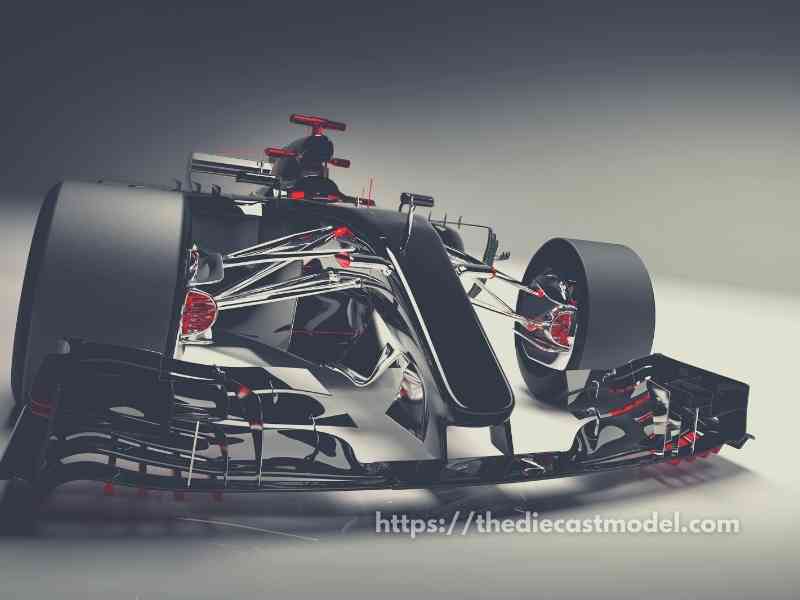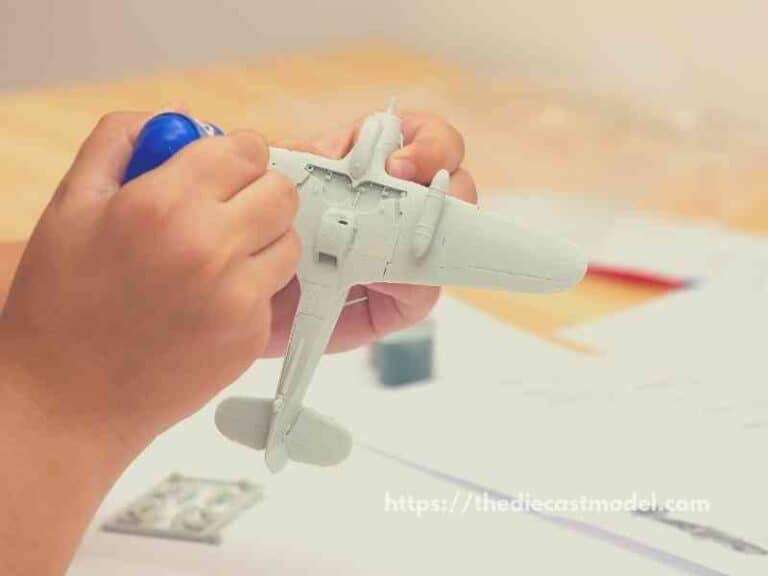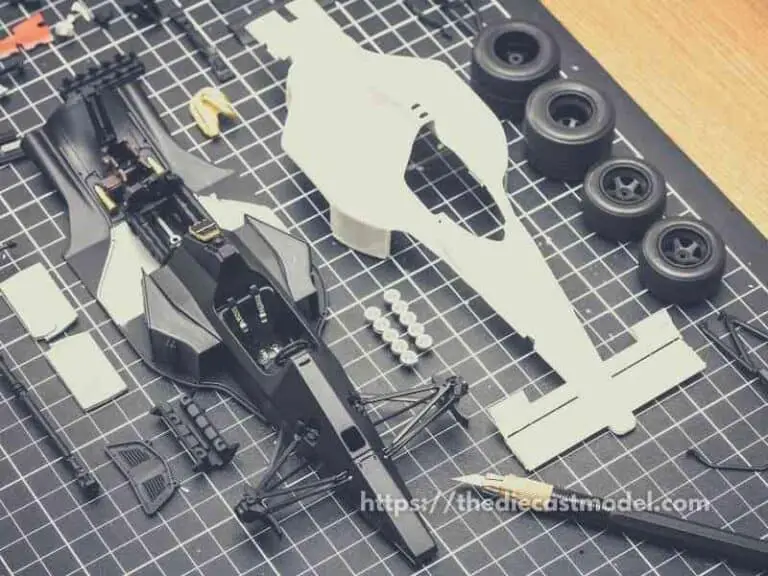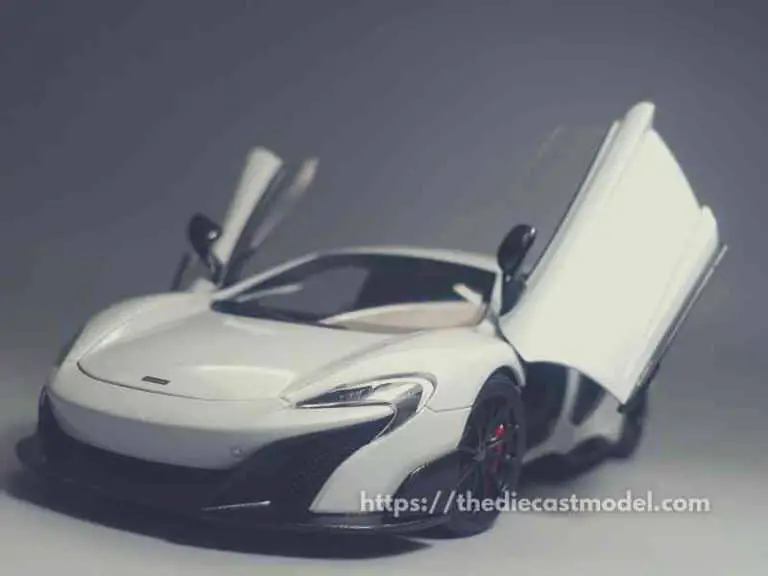Spark Models: Everything You Need to Know
One of the brands you would eventually come across in becoming a hobby collector is Spark Models. For diecast and kit collectors, they might wonder where they are made from. In this article, we are going to talk about Spark as a company and its products.
Spark models are diecast and are made using the diecasting technique. In fact, the Spark brand was one of the pioneer brands that featured the resin diecasting technique. Nowadays, they are also using the traditional diecasting technique in making their models.
That is actually one of the clear facts about spark models. They are one of the pioneers of the Resin diecasting technique. Sadly, they had no choice but to return to the traditional diecasting technique which we will discuss later.

Are spark models diecast?
Spark models are die‐cast and this method is used by Spark purposefully. Let us first understand what is die‐casting and why Spark is using it.
Die‐casting is a production method where we put molten lead into zinc alloy or resin, it is inserted in the mold to hold a particular required shape of the toy.
For more information on Traditional Diecasting vs Resin Diecast, feel free to check this article: Resin vs Diecast Models: A Detailed Comparison
Therefore, these toys are composed of metal, glass, rubber, plastic, or other parts of metal. And if die‐casting is used for plastics exclusively, an injection molding process is utilized.
This method is quite similar but principally different due to the differential characteristics of materials being used such as metals and plastics.
Alternatively, in the beginning, Spark model company was the first one to specialize in modeling replicas in resin material instead of the die‐cast method primarily used for metals.
Since the collectors of cars doubted resin models’ product quality, they were not ready to take these models in their cars’ collections.
However, Spark was well informed of this financially viable decision to produce smaller units through resin‐based
models’ production.
Later on, Spark shifted to die‐cast metal production due to high demand by its customers and car models collectors.
Now Spark models are more specialist replicas where they compete with the best in the market and Spark has remained successful in filling smaller gaps left unattended by its counterparts.
Spark’s die‐cast models’ vast offering features not only the modern‐day replicas but also the classical worlds of Formula One, rally races, races considering endurance, and road cars in 1:18 and 1:43 scaling.
For more information about various diecast scales, feel free to check this article I’ve made: Diecast Model Scales: A Complete Analysis
Spark brand is well renowned specifically for its diehard love of Le Mans and this helped it in releasing countless models in different car categories that have participated in racing.
Where are Spark Models Made?
Spark models are now made in southern China. However, they started in Europe as a cottage industry and by using what they learned about metal and resin, they started introducing the resin diecasts to the model toys. Some smaller parts are still made in Europe but assembled in China.
Spark models are carved and crafted in Southern China with an absolutely stunning level of craftsmen
sculpt the model prototype.
At the earlier stages, Spark took the route of the European cottage industry.
By using white metal and resin, Spark was producing smaller runs in Europe and then these hand‐built models were transported to China.
There were more skilled workers available in China who crafted these handbuilt models at better competitive rates compared to the European workers.
Hence, it was in Spark’s interest to shift its overall production facility in China and gain a competitive advantage to its competitors as far as it can.
For example, I also discussed in my Hot Wheel article why they are cheap and one of which is the labor cost. To compete, Spark also did the same thing to make their products cheaper. If you’re interested in Hot Wheels then I have an article for you: What is the reason why Hot Wheels are Cheap?
This was no less than a challenge for Spark to continue its price advantage position in the market whereby not losing the models’ build quality.
All the model enthusiasts are constantly in search of improved modeling techniques and Spark was very vigilant in this scenario.
Let us take an example of chrome window frames. In the past, these frames were either replicated in silver paint or in photo-etched steel.
But the overall outlook was not up to the car enthusiasts’ standards or expectations.
Spark was the one to start using chrome foil for having a realistic finish and it later used it for another part of cars’ models such as curved strips.
As you can see, they really like pioneering things which is what I really like about them.
For Spark models, when the decision is finalized for producing a particular car, its related drawings, measurements, and photos are handed over to one of Spark’s craftsmen.
This craftsman will develop the mold prototype at China’s production unit and then it will be mass‐produced as per the required quantity.
However, there are many approval stages before mold production.
And Spark is also working on CAD‐CAM (Computer-Aided Design) technologies and techniques from 3D scans of modern and classic cars in addition to the supplied computer data by modern car manufacturers.
Undoubtedly, the skills of Chinese craftsmen are extraordinary but the latest computer interventions are the best suited for die‐cast model production.
About Spark
Hugo Ripert, the founder of Spark Model Co., was a car aficionado and his father, Andre, was also working in the modeling business prior to Hugo’s step‐in car modeling business.
Hugo Ripert was working with Ixo, Vitesse, and Quartzo brands and he was also the project lead for model research and development.
The method was to follow a specified approach whereby starting from photo research leading to prototype modeling to hand samples which then transferred to the production unit.
Hugo Ripert was very possessive with regards to the car modeling business and in the year 2000, he started organizing the initial Spark models from the Le Mans annual championship which is conducted every year in Le Mans, France.
Hugo Ripert’s primary objective was to produce Spark models and distribute them accordingly to develop his car modeling enterprise.
He was focused and thereby highly concentrated on all the gaps available in the business to consider and work along these gaps to fill and cherish his successes.
He purposefully picked “back of the grid” cars which were usually overlooked by key manufacturers and produced models in smaller quantities i.e., only a maximum of 1000 pieces were made.
And he also setup a production unit in Southern China with the help of his partners. Hugo Ripert always acknowledged car enthusiasts’ collective efforts being the striking reason for Spark models’ growth and progression.
He also emphasized that their passion helps us in searching and improving modeling techniques and selecting
materials which are as per their expectations.
Initially, Hugo Ripert was using resin castings for car bodies but later he moved towards die‐casting (Zamak) injection molding method.
This was necessitated due to the high production volumes required to meet consumer demands for absolute ravishing product quality.
The topmost advantage of using Zamak die‐casting was its higher fluidity to achieve thinner walls, complex geometries, and an unmatched surface coatings’ quality.
Later on, Hugo Ripert shifted molds to his in‐house production units instead of sending them to third parties or partner sites.
The primary objective was to achieve greater control over the production process while keep on growing its photographs and documentary archival.
Spark’s library was constantly updated due to the continued research through the internet, books, and car magazines.
And it turned as a key characteristic for Spark’s success by researching classic cars and managing a team of professional project managers who had specialized knowledge in different car types.

“Only the things I love”
thediecastmodel.com is reader-supported. When you buy through links on the site, I earn an affiliate commission.
So, here are the things I love when taking care of my Diecast Models.
Cleaning the Models
The first we are going to talk about is cleaning the models.
Removing Dust
- Air Brush – For me, this is the best since it not just removes dust but you can use it in painting/clear coating.
- Air Duster – This is a good alternative to Airbrush
- Normal Brush – If you are short on budget, you can use a normal brush. However, make sure that the brush has soft bristles because there are some hard brushes than can cause scratches. That’s why I recommended a good brush that can do the job properly.
Cleaning and Shining Hacks
Well, here are some of my cleaning hacks for removing scratches, oxidation, and so much more.
- Removing Decal Adhesive – Use Goo Gone on those hard-to-remove decal adhesives. It works fast and works like charm!
- Waxing and Polishing – Here is something a lot of people don’t know. Waxing protects the clear coat and paint while polishing shines the model. Instead of buying it separately, use a 2 in 1 to save money. Get this instead.
- Beginner Wax – The wax I recommended earlier is good and provides the best results based on my experience. But a beginner might have a problem especially if they’re not good at applying wax. Solid wax reaching hard to reach surface can be hard to remove. You have two choices here. One is to use a qtips to reach those surfaces, another is to use a liquid wax I recommended.
- Cleaning Wheels, Rubber, Plastic – Do not forget that rubber and plastic surface are quite different, especially in the cleaning process. Just wiping it down won’t do the job. That’s why I use Meguiar’s Vinyl and Rubber Cleaner and Conditioner. Works like charm!
- Make the Wheels Shine! – Making our models look good won’t be complete without tiny details such as shiny wheels! Do not forget this because however small this is, the difference can be as big as night and day.
- Remove Scratches Easily – Tiny scratches are not the end for your model. Here is a simple trick I’ve been using to make my models look scratch-free even without repainting. Use T-Cut.
Painting the Models
Painting Tools
Make sure when you paint models, have these ready.
- Tape – A tape is important if you are painting a straight line. Furthermore, it will prevent your paint to scatter on other parts. I recommend Tamiya Tape since it is really made for models. Furthermore, they stick really well preventing paint splatters.
- Brush (Beginner) – Find a good set of brushes to paint your models. Of course, you can opt for an airbrush but it’s quite expensive.
- Airbrush (Intermediate/Expert) – This will yield a significantly better result than an ordinary brush because you can easily spray the paint evenly. I recommend this if you know what you’re doing.
- Stand(Optional) – Stands are good because it can be hard to manually hold the models while painting. It is optional but in my opinion, the price is well worth it for the comfort it gives.
- Drop Cloths – Drop Cloths will protect your surroundings from the paint.
- Primer – The most common beginner mistake I see is painting models without any Primer. A primer will prevent imperfections such as bubbles or paint not sticking to your models. It is a small price to pay for quality results.
- Clear Coat – A clear coat will protect the paint of your models. This will make the paint last longer. Also, it is the one responsible for making your models shine.
Paints
Of course, you can’t do painting properly without paint. So here are the ones I recommend.
- Acrylic Paint – Good for beginners because it dries quickly. However, it doesn’t produce results as good as enamel paint.
- Enamel Paint – Provides a good quality finish and longer-lasting paint. However, it takes longer to dry and requires expertise to use.
Model Maintenance
Model Storage
- Simple Wood Cabinet – While it doesn’t let you display your models, wooden cabinets are good storage for these models. For one, they are not heat conductors which means that the temperature inside will remain constant and remain cool. Furthermore, they prevent light from reaching the models which can cause oxidation.
- Clear Cabinet with Lock – If you want to display your models, then I recommend this. It closes so dust won’t easily get to your models. I also recommend you don’t put more than 1 model in each compartment since metals are good conductors of heat.
Model Photography
So you want to show off your models to others? Well, I got you covered.
Here is my beginner-friendly model photography tutorial that teaches everything from taking pictures to the editing process.
You will also see me doing hands-on photography in that tutorial.
Here is the link: How to Take Pictures of a Diecast Model or Model Kit | Helpful Illustrated and Video Guide







